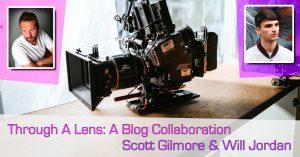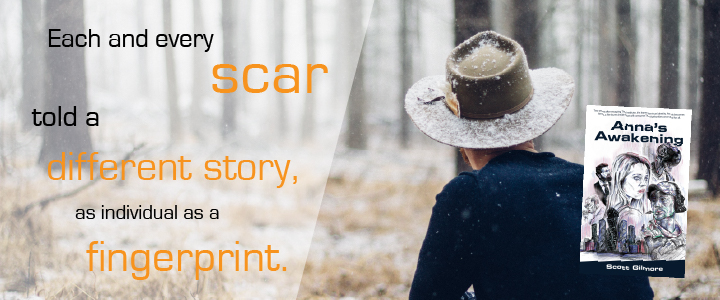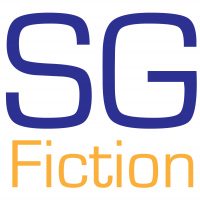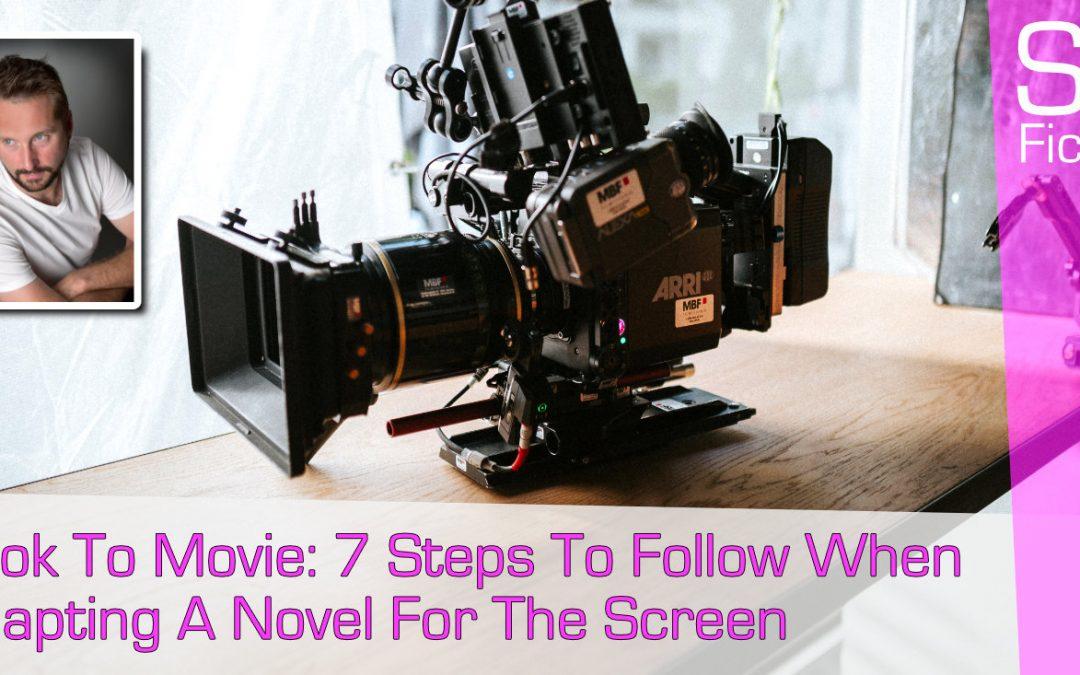Book to movie adaptations can be hit or miss. Here are 7 steps to make sure your adaptation of a beloved book starts from a solid foundation.
In this Book to Movie article, you will find advice in these areas:
- Why choosing the right book is vital to ensuring the on-screen adaptation has enough action for an audience,
- Why it’s important to research screenwriting thoroughly so you can understand the craft and how it differs from other writing,
- Keeping it simple with the three act structure, so you can focus on the basics first,
- Why making an outline gives you a sense of how scenes from the book play out in your mind,
- How feeling brave enough to cut can help remove excess padding and even characters, allowing for a lighter script in the end,
- How your first draft is about getting the story down rather than focusing on quality right away – that is what redrafting is about. This means you can be less hard on yourself as a writer during the first draft,
- Why getting feedback that counts can help your writing as a whole, but it is vital to be diligent with researching those you pay for screenplay coverage services.
Read the rest of the Book to Movie article to learn 7 tips that you can apply to your screenplay writing when adapting a novel for the screen.
Book To Movie & Game To Movie Articles
Book to movie adaptations haven’t always been the best choice of entertainment, especially for those who loved the film’s source material first. Working from novel to movie, the screenwriters and directors can stick close to work written by the author. However, sometimes those in charge of the movie’s production can utilise their ‘creative licence’ to adapt elements of the film to make it fit their creative vision.
When these moments of ‘creative licence’ don’t work, the results can be catastrophic. By tampering with the source material, the screenwriters can cause irreparable damage to character arcs, plot points, and the story as a whole.
On the other hand, when ‘creative licence’ is used effectively, it can lead to inspired adaptations of any book to movie. If the director or screenwriter can use their creativity to improve the source material, it adds to a better viewing experience for the paying audience. Therefore, the tension, drama, and characters’ stories can be tweaked and heightened from that which the original author had initially penned.
This creative writing blog article is the first in several collaborative articles with Will Jordan at Access All Areas. As a fellow Belfast Blogger, Will writes articles on video games, movies, and tech. If that’s your thing, make sure to head over to Will’s Access All Areas blog and read his views on adapting video games to a movie.
As a fiction author, I love to see an excellent novel to movie adaptation. There is something inspiring about seeing screenwriters and directors reimagining an author’s vision and transforming for the screen. In time, if my two novels, Inside Iris and Anna’s Awakening, were to be adapted for the screen, I would look forward to seeing how it would translate through the eyes of others.
In this article, I will share 7 top tips for those planning to adapt a beloved novel to a film. By following this series of 7 tips, you should ensure that your book to movie adaptation starts from a solid foundation. If you have adapted a book to a film in the past, what was the most challenging aspect? Comment below with your thoughts.

Check out the video game to movie blog on Will’s Access All Areas blog, hyperlinked above.
Choose The Right Book
With Hollywood’s obsession of making hit movies that get butts on seats, it is sometimes considered a ‘sure thing’ to find a hit novel and adapt it into a film. After all, the book was already a hit. Therefore, if the producers hire the right screenwriters and director, the studio will surely have another success on their hands.
Unfortunately, this isn’t always the case. When considering whether to start a book to movie adaptation, it is vital to choose the right book. At times, a novel can be a great success because it is a well-written analysis of a character as they overcome a personal battle. This means, if the character is sat alone for great lengths of time with their thoughts, it may not make for the best adaptation for the big screen.
Novels that transfer well from book to screen are usually those with a lot of drama, conflict, and action that can be seen rather than told. This means, if your choice of book lacks in those areas, you may need to look again.
Start by choosing the right book with the right balance of character intrigue, drama, conflict, and physicality and you will be on the right track with your book to movie adaptation.
Research Screenwriting Thoroughly
As with an author who wishes to write fiction better, it is crucial to ensure the budding screenwriter spends enough time researching how to write for the screen. Whereas writing fiction can be a lengthy process, the methods for writing for the screen and stage are considered to be more concise.
Where an author can compose lengthy passages with reams of description and a character’s inner torment, a screenplay has to be more inventive about how to portray that to an audience. In screenwriting and drama, one page is generally considered to equal one minute of action on-screen. Therefore, if a 500-page novel were to be adapted as it was, an audience would have to sit through over eight hours of running time. This means screenwriters have to research how to compose scripts which allow for camera movements as well as actors’ interactions on screen.
Screenwriting classes are one way any budding scriptwriter can learn the basics, but some screenwriting books can assist you in your first steps. On Amazon, some of the current bestsellers include:
- Save The Cat! by Blake Snyder,
- The Screenwriter’s Bible, by David Trotter, and
- Into The Woods, by John Yorke.
These books are there to assist those writers who need a solid foundation in what it means to be a screenwriter. They also offer practical advice that can help writers of all skill levels.
Another way for budding screenwriters to learn is to read some of their favourite scripts. By looking at how the movie works beneath the special effects and actors’ performances, it is possible to learn how the script works on a structural level. Websites like those listed below can give you access to popular scripts before you write your book to movie adaptation.
Look at how well-known screenwriters have structured these scripts. By doing so, you will be able to form your ideas about how best to approach your scriptwriting project.

Stick To The Three Act Structure
Once you have completed some research, it is time to consider the novel you with to retell as a movie. This is where you need to read the book thoroughly and make a serious effort to note all of the key action points or beats throughout the book.
This can be done with a series of sticky notes or coloured pens. By using these to lay out the heartbeats of your 500-page novel, you will be able to consider which points are critical to the telling of the story.
If you finish reading and find you have two hundred key points, you have likely been a tad too considerate to the book you love so much. If this is the case, it is time to get out the red pen and start making some decisive choices about what is needed to tell the story and what could be considered a luxury.
Only by eliminating the luxuries within the book will you be able to trim the book down enough to fit it into a 150 or 200-page script. This is the process every writer goes through when planning a story, and it should be considered good practice when it comes to redrafting the script.
Once you have your key points gathered, it is time to put them into a simple three-act structure. Simply put, it is the beginning, middle, and end of your script. In a scriptwriting sense, The three steps should be seen as:
- Act I – The Setup – Introducing the characters and their world. It is here where an ‘inciting incident’ occurs that starts the protagonist off on their journey.
- Act II – The Build-up – This is the central part of your script. Here, we will see the hero go through trials and tribulations ahead of possibly facing a setback. Often, our protagonist finds an inner strength or learns from a flaw or mistake and carries on.
- Act III – The Resolution – This is the ending of your script, where the protagonist achieves their goal or not. Here is where the audience gets what’s known as a cathartic release of emotion, either happy or sad, at the stories conclusion.
Taking time to consider the book you hope to adapt is essential here. Use the key points you have gathered throughout the novel and slot them into the three acts laid out above. By doing this, you will start to have a structure to the script as you get set to write.
Make An Outline
To ensure you have each key point in the story recorded correctly, go through them individually to write them as an outline for your screenplay. By doing this, you will transform single five or six-word bullet points into more elaborate sentences and paragraphs. This will give you some space to consider how you may expect characters to interact or how the camera may focus, honing the audience’s attention on one particular area.
When utilising this approach, you may expand ‘the protagonist receives his son’s letter’ to:
- The shot fades up from black to see (NAME) sitting at the kitchen table with his son’s letter in his hand. He takes a final draw on his cigarette. The camera cuts to view the unopened letter in his hand. It trembles as he stubs out the butt in the ashtray. (NAME) slowly opens the envelope and lifts out the letter. He sighs before beginning to read.
By making an outline such as this allows you to consider whether specific scenes are visual enough for the camera and the audience. If a key point cannot be visualised in a manner that excites you or is integral to the story, it then asks the question about whether it should be included in the script in the first place.
The outline you create can give you a solid plan to work from. You will be able to accurately visualise the characters and the scenes as they play out in your mind. This means you will be able to write the script more freely and can tick off the scenes in turn as you go.

Don’t Be Afraid To Cut
As a writer, one of the temptations we have is to include too much just for the fact that we become attached to a particular scene or character. As you go through the planning process and start to compile a detailed outline of what you should include in your script, you have to acknowledge whether a favourite scene is required to advance the story you tell on screen.
If you can justify a chosen scene’s inclusion, it can then be considered when you go to write the script. However, if you find yourself scrabbling for a valid reason to keep the scene in then, I’m afraid, it has to go.
This approach is not only applicable to scenes, but it should also be used when it comes to reviewing the position of characters. At times, screenwriters and directors have written characters out of a book to movie adaptation. This is not a cruel act on the part of the writers. Instead, it is a matter of deciding whether there is enough time on screen to justify a character’s place, especially if the book being transformed is an epic 500-600 page brut.
Sometimes, the writers will give key lines from the novel to other characters in the script. This means that the continuity of the story remains. Doing so trims down the characters on screen by one body. Such approaches allow the audience to feel less overwhelmed to get to know multiple side-characters and focus their attention on those key players within the story they wish to tell.
Don’t be afraid to cut excess characters or scenes from the screenplay if they don’t add to the story. By working with a concise medium, you will need to learn which aspects are vital to the story and which can be expendable to ensure your running time isn’t too bloated.
Your First Draft & Redrafting
There is nothing more daunting than writing your first draft of a script. When I wrote plays, I remember feeling like I was trying to tell a story while playing chess at the same time. As a young playwright, I would find it hard to balance getting the story right on the page while considering how I could put it across physically on the stage or a screen.
I would always remember the words ‘show, don’t tell’, and would continually joust with whether I was getting the balance right. However, what I didn’t come to realise at 21 was the fact that those tortured thoughts were all part of the process.
When you sit down to write your first draft of a screenplay, you must remember to be concise and get it down on paper. As you write, you can use your script outline and tick off the key beats of the story, but you need to get the story down. That’s the bottom line, that is your goal, and that is what you should aspire to achieve in the X weeks it takes to write the first draft.
All writers struggle with the first draft because they worry whether they’re ‘doing it right’ or if they have forgotten something pivotal to the whole plot. You aren’t alone when it comes to first draft nerves or crises of confidence. Every scriptwriter before you has been in that position, so embrace it and focus on the job at hand.
One tool that screenwriters can consider when writing a book to movie adaptation is that of screenwriting software. These bespoke programmes assist the writer in how they go about the writing process from a formatting standpoint. Some of the top pieces of software include:
- Final Draft,
- Fade In,
- Script Studio, and
- Writer Duet.
All of these programmes are worth researching if you look to make your scriptwriting journey more serious.
Once your first draft is done, lock it away for at least a month. The reason you do this is to give yourself some space from the writing process. Therefore, when you unlock the drawer and start rereading the piece, you will see some of the glaring errors more clearly than you would when redrafting immediately.
Some key points to consider in your redraft are:
- Have I adapted the book as I set out in the beginning?
- Have I written this scene with enough physicality (have I shown, not told)?
- Is my dialogue sharp enough, or would the conversation be longer?
- Have I portrayed the character appropriately from the novel?
There are tens of analytical questions to consider when you redraft your screenplay. However, it always comes back to the source material and your script outline. If necessary, you can always revisit the book to consider your approach one more time. As you redraft, remember that you want to carefully consider what you want the audience to see or hear through the actions and visuals on screen. If you haven’t quite nailed a particular scene, how could you best rewrite it so that it shines to those watching?

Get Feedback That Counts
When it comes to getting feedback on your script, it is vital to get feedback that counts. That means you expect to get criticism from those who read it, but it is this ‘constructive criticism’ that will help raise your book to movie adaptation to the next level and, in turn, enhance your craft as a writer.
If you are a screenwriter who has the money to pay for screenplay coverage services, there are many freelancer websites out there that can offer feedback on your script. However, you must research all freelance and consultancy firms diligently. Considering that you want value for money, it is essential to look for independent testimonials and reviews to make a clear decision on who to pay to critique your script.
Many of these services cost upwards of £200 for a full-length script of 90-120 pages. This means that your book to movie adaptation of 90 minutes to 2 hours could set you back a hefty fee. Yet, if the person or agency you hire has the right credentials, it could work out for the best.
There is no guarantee when it comes to an online critique. This is why getting feedback from reliable and authoritative sources can help you with the scripts you compose. By contacting agencies who employ readers with industry experience, they can give you guidance that could take years to find elsewhere.
When you get your feedback, it is vital to consider the points offered for a time before launching into yet another redraft. As you look to how to revise the book to movie adaptation once again, you must make changes in the right places and optimise the feedback you possibly paid hundreds of pounds for.
Book To Movie: The Takeaway
As the author of fiction books, I could be seen as being somewhat one-sided in my viewpoint of which medium is better for storytelling. However, when I completed my MA in Creative Writing, I focused on play and screenwriting. Therefore, I see the positives of both.
I love how the author can take their time over description, plot, and character development in their novels. By allowing the reader to become engrossed in the story over X hours and Y hundred pages, I feel the book can be much more elaborate in how it shares a story.
This can mean that epic novels require extra care and attention when it comes to translating them from book to movie. Sometimes, one book can become two or even three films. It is, therefore, the responsibility of talented screenwriters and directors to ensure the much-loved novel is treated with care.
When the book to movie adaptation pays off, the movie can become something of a companion to the novel. It can be seen as the retelling of a story, allowing for an alternative viewpoint or a visual guide through a world that was, until then, unseen by the eye.
It is a joy to watch a movie that has been well-structured and treats the source text appropriately. It shows that those behind the film can plan, develop, and reimagine the world written by another. This displays real creativity rather than the approach of plunder and destruction, as seen with the canon of much-loved favourites, like Doctor Who and Star Wars.
Share your thoughts below. If there is one excellent book to movie adaptation that must be seen, add it to the comments below with a reason why others should add it to their list. With any luck, we’ll have 20 movies on the list and can share the recommendations of others.


Great post! Thanks for sharing ?
Thanks for the comment, Lauryn.
It was great to get to do this collaboration with you. I’ve been writing screenplays (mostly shorts) for 7 years, and this article shows I still have a lot to learn.
Great stuff!
It was great to get to do this collaboration with you. I’ve been writing screenplays — mostly shorts — for 7 years, and this article shows I still have a lot to learn.
Great stuff.
Likewise, Will. We are all learning and ‘the day you don’t learn is the day we die’, as they say. Loved collaborating with you. We’ll look to see how the next article works out and maybe do some more into 2020.